Xinkai Song
DA-Ada: Learning Domain-Aware Adapter for Domain Adaptive Object Detection
Oct 11, 2024
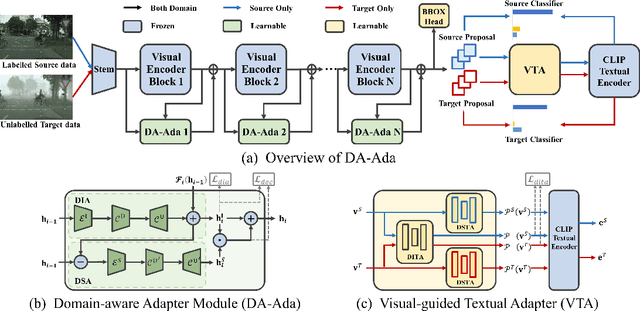
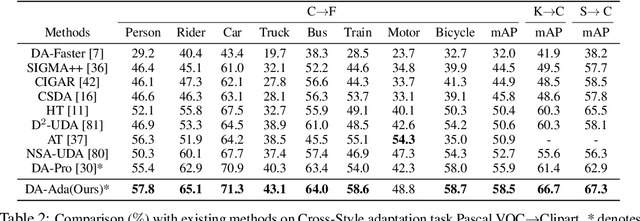

Abstract:Domain adaptive object detection (DAOD) aims to generalize detectors trained on an annotated source domain to an unlabelled target domain. As the visual-language models (VLMs) can provide essential general knowledge on unseen images, freezing the visual encoder and inserting a domain-agnostic adapter can learn domain-invariant knowledge for DAOD. However, the domain-agnostic adapter is inevitably biased to the source domain. It discards some beneficial knowledge discriminative on the unlabelled domain, i.e., domain-specific knowledge of the target domain. To solve the issue, we propose a novel Domain-Aware Adapter (DA-Ada) tailored for the DAOD task. The key point is exploiting domain-specific knowledge between the essential general knowledge and domain-invariant knowledge. DA-Ada consists of the Domain-Invariant Adapter (DIA) for learning domain-invariant knowledge and the Domain-Specific Adapter (DSA) for injecting the domain-specific knowledge from the information discarded by the visual encoder. Comprehensive experiments over multiple DAOD tasks show that DA-Ada can efficiently infer a domain-aware visual encoder for boosting domain adaptive object detection. Our code is available at https://github.com/Therock90421/DA-Ada.
TensorTEE: Unifying Heterogeneous TEE Granularity for Efficient Secure Collaborative Tensor Computing
Jul 12, 2024
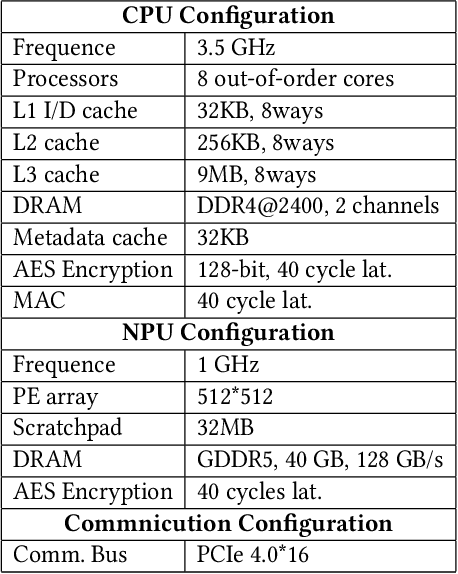
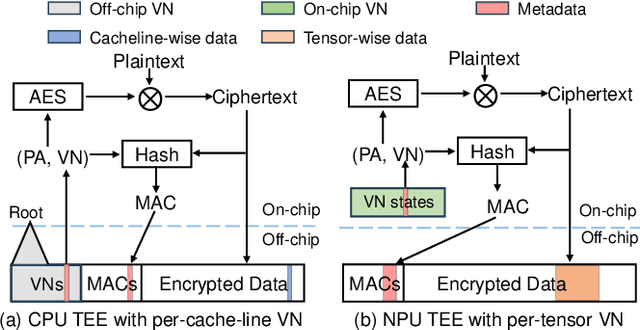
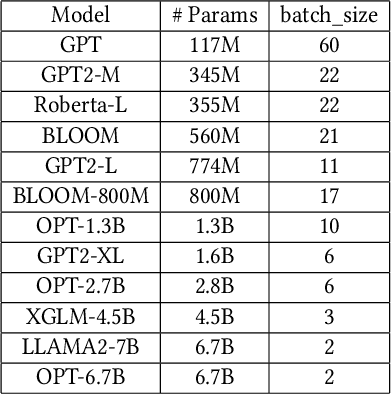
Abstract:Heterogeneous collaborative computing with NPU and CPU has received widespread attention due to its substantial performance benefits. To ensure data confidentiality and integrity during computing, Trusted Execution Environments (TEE) is considered a promising solution because of its comparatively lower overhead. However, existing heterogeneous TEE designs are inefficient for collaborative computing due to fine and different memory granularities between CPU and NPU. 1) The cacheline granularity of CPU TEE intensifies memory pressure due to its extra memory access, and 2) the cacheline granularity MAC of NPU escalates the pressure on the limited memory storage. 3) Data transfer across heterogeneous enclaves relies on the transit of non-secure regions, resulting in cumbersome re-encryption and scheduling. To address these issues, we propose TensorTEE, a unified tensor-granularity heterogeneous TEE for efficient secure collaborative tensor computing. First, we virtually support tensor granularity in CPU TEE to eliminate the off-chip metadata access by detecting and maintaining tensor structures on-chip. Second, we propose tensor-granularity MAC management with predictive execution to avoid computational stalls while eliminating off-chip MAC storage and access. Moreover, based on the unified granularity, we enable direct data transfer without re-encryption and scheduling dilemmas. Our evaluation is built on enhanced Gem5 and a cycle-accurate NPU simulator. The results show that TensorTEE improves the performance of Large Language Model (LLM) training workloads by 4.0x compared to existing work and incurs only 2.1% overhead compared to non-secure training, offering a practical security assurance for LLM training.
Emergent Communication for Rules Reasoning
Nov 08, 2023



Abstract:Research on emergent communication between deep-learning-based agents has received extensive attention due to its inspiration for linguistics and artificial intelligence. However, previous attempts have hovered around emerging communication under perception-oriented environmental settings, that forces agents to describe low-level perceptual features intra image or symbol contexts. In this work, inspired by the classic human reasoning test (namely Raven's Progressive Matrix), we propose the Reasoning Game, a cognition-oriented environment that encourages agents to reason and communicate high-level rules, rather than perceived low-level contexts. Moreover, we propose 1) an unbiased dataset (namely rule-RAVEN) as a benchmark to avoid overfitting, 2) and a two-stage curriculum agent training method as a baseline for more stable convergence in the Reasoning Game, where contexts and semantics are bilaterally drifting. Experimental results show that, in the Reasoning Game, a semantically stable and compositional language emerges to solve reasoning problems. The emerged language helps agents apply the extracted rules to the generalization of unseen context attributes, and to the transfer between different context attributes or even tasks.
Learning Domain-Aware Detection Head with Prompt Tuning
Jun 09, 2023



Abstract:Domain adaptive object detection (DAOD) aims to generalize detectors trained on an annotated source domain to an unlabelled target domain. However, existing methods focus on reducing the domain bias of the detection backbone by inferring a discriminative visual encoder, while ignoring the domain bias in the detection head. Inspired by the high generalization of vision-language models (VLMs), applying a VLM as the robust detection backbone following a domain-aware detection head is a reasonable way to learn the discriminative detector for each domain, rather than reducing the domain bias in traditional methods. To achieve the above issue, we thus propose a novel DAOD framework named Domain-Aware detection head with Prompt tuning (DA-Pro), which applies the learnable domain-adaptive prompt to generate the dynamic detection head for each domain. Formally, the domain-adaptive prompt consists of the domain-invariant tokens, domain-specific tokens, and the domain-related textual description along with the class label. Furthermore, two constraints between the source and target domains are applied to ensure that the domain-adaptive prompt can capture the domains-shared and domain-specific knowledge. A prompt ensemble strategy is also proposed to reduce the effect of prompt disturbance. Comprehensive experiments over multiple cross-domain adaptation tasks demonstrate that using the domain-adaptive prompt can produce an effectively domain-related detection head for boosting domain-adaptive object detection.
 Add to Chrome
Add to Chrome Add to Firefox
Add to Firefox Add to Edge
Add to Edge